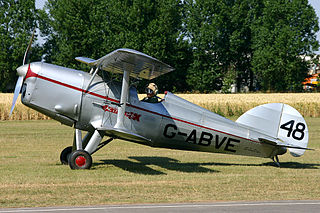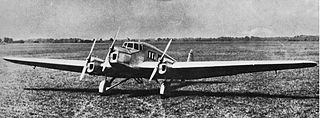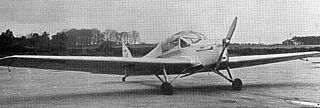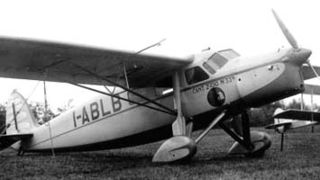Related Research Articles

The Parnall Heck was a 1930s British four-seat cabin monoplane built by Parnall Aircraft Limited at Yate, Gloucestershire. Originally a Hendy design, few were built. It combined the strength and comfort of a cabin aircraft with the speed of a racer.

The Miles M.28 Mercury was a British aircraft designed to meet the need for a training and communications plane during the Second World War. It was a single-engined monoplane of wooden construction with a twin tail and a tailwheel undercarriage with retractable main units.

The Chrislea Super Ace is a 1940s British four-seat light aircraft built by Chrislea Aircraft Limited.

The Arrow Active is a British aerobatic aircraft built in the 1930s.

The Miles M.2 Hawk was a 1930s British two-seat light monoplane designed by Miles Aircraft Limited.

The Miles Hawk Major was a 1930s British two-seat light monoplane developed by Miles Aircraft from the Miles Hawk.

The Miles M.3 Falcon is a 1930s British three/four-seat cabin monoplane aircraft designed by Miles Aircraft Limited.

The Heston Type 1 Phoenix was a 1930s British single-engined five-seat light transport monoplane built by the Heston Aircraft Company Limited.

The Fiat G.2 was an Italian three-engine six-passenger monoplane transport aircraft designed by Giuseppe Gabrielli and built by Fiat.

The General Aircraft Monospar was a 1930s British family of touring and utility aircraft built by General Aircraft Ltd (GAL).

The British Aircraft B.A.IV Double Eagle was a British twin-engined six-seater monoplane designed and built by the British Aircraft Manufacturing Company of London Air Park, Hanworth, England.

The de Havilland DH.81 Swallow Moth was aimed at the low-cost sporting aircraft market during the Great Depression. It was a single-engined two-seat low-wing monoplane; only one was built.

The de Havilland T.K.2 was a British 1930s single-engined monoplane, designed by students of the de Havilland Aeronautical Technical School. It won two races before World War II, and afterwards set a class closed circuit speed record.

The Miles M.13 Hobby was a small low-winged monoplane built for racing and research in the United Kingdom just before World War II. A single engined single seater, it ended its days in the wind tunnel at the R.A.E.

The de Bruyne DB-2 Snark was a British experimental four-seat cabin monoplane designed by N. A de Bruyne and built by Aero Research Limited (ARL) of Cambridgeshire. It was built to test low weight, bakelite-bonded plywood, stressed skin wing and fuselage structures.
The CLW Curlew was a two-seat, single-engined training aircraft built partly to demonstrate a new wing structure. It flew successfully in the UK in 1936, but the company went bankrupt and only one Curlew flew.

The Comper Streak was a single-engined, single-seat racing monoplane built in the UK in the mid-1930s. It was not successful as a racer and only one was produced.
The Pobjoy Pirate was a three-seat, high-wing monoplane designed to compete with the de Havilland Leopard Moth using a low power but light Pobjoy radial engine. Flight tests showed the Pirate to be uncompetitive and its development was rapidly abandoned.

The CANT Z.1010 was a single engine, five seat Italian passenger aircraft flown in the mid-1930s. Only one was built.

The Koolhoven F.K.54 was a Dutch single-engine, three-seat touring aircraft with a retractable undercarriage. It flew shortly before the start of World War II and its development was abandoned after its first flight as attention turned to military aircraft.
References
Citations
Cited sources
- Ord-Hume, Arthur W.J.G. (2000). British Light Aeroplanes. Peterborough: GMS Enterprises. ISBN 978-1-870384-76-6.CS1 maint: ref=harv (link)